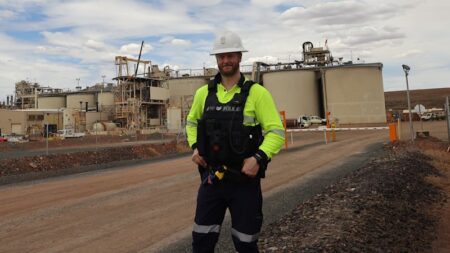In other words, the hardest part of midlife may not be what people face, but the lack of time they have to face it.
Australians in their middle years report the highest and most persistent levels of time strain.
Almost half of those aged 35 to 44 say they “often feel rushed or pressed for time” – a figure that has barely shifted in two decades, despite the rise of flexible work, digital tools and greater awareness of work-life balance.
Busyness has become a defining feature of modern adulthood.
And the reasons are obvious.
The middle years combine peak work demands with peak family responsibilities: school-aged children, ageing parents, mortgage stress and the daily logistics of running a household.
For many, every hour feels contested.
Careers matter, children need support, loved ones require care, and communities depend heavily on volunteer labour that is becoming harder to give.
And unsurprisingly, this pressure is not evenly shared.
Despite higher labour force participation and more parents working flexibly, women still carry most of the unpaid load.
Women spend, on average, seven more hours per week on housework and around five more hours caring than men.
Loading
By age 55, one in four women are providing regular elder care, compared with 15 per cent of men.
Around one in 10 women in their late 40s are caring for both children and ageing parents at the same time.
For a generation often labelled the “sandwich generation”, time is stretched to its limits.
The toll is emotional, logistical and economic.
Time scarcity erodes mental health, reduces productivity, limits community participation and increases the likelihood of relationship strain.
BCEC research shows that financial hardship increases the risk of separation fourfold, and the intersecting pressures of long hours, caregiving and money worries form a combustible mix.
And when recovery time is scarce, small stressors accumulate into major fractures.
But the invisible contributions of those in the middle years are essential to the functioning of families, communities and the broader economy, yet they remain undervalued and under-supported.
Australians in their middle years form the scaffolding for the nation’s society, acting as a bridge between generations, the stabilisers of family life and community, and the civic and economic centre of gravity that keeps us moving forward.
They sustain families, mentor colleagues, keep community organisations afloat and anchor Australia’s civic and economic life.
Supporting them is not only a moral imperative – it’s also a national investment.
This means confronting time poverty directly.
And the solutions are neither vague nor utopian.
Supporting wellbeing through midlife means tackling the time deficit head-on, through flexible work, predictable schedules, family-friendly policies and better access to childcare and eldercare.
Loading
Communities and service providers can design supports that lighten administrative loads and create spaces for genuine connection.
For those providing elder care, improved access to respite, home-care packages and navigation services can help prevent burnout and maintain workforce participation.
Governments can streamline access to services, cut red tape, simplify financial and regulatory transactions, and invest in childcare, early learning, aged care navigation and respite.
And society needs to navigate a cultural shift that protects downtime, shares care more equitably, and values efficiency and balance over “busyness”.
The payoff is tangible.
When people reclaim even a modest measure of control over their hours, productivity rises, job satisfaction improves and wellbeing strengthens.
Families are more resilient.
Community participation grows.
Mental health outcomes improve.
In short, time well-supported becomes time well-used for households, workplaces and society.
Restoring control over time is not a luxury or a lifestyle aspiration.
It is essential to sustain happiness, cohesion and resilience during the most demanding years of adult life.
If we treat time poverty with the urgency it deserves, the returns will be felt across generations.
Read the full article here

















